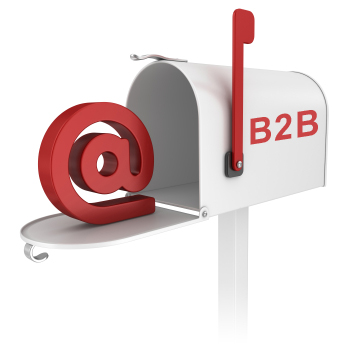In spite of the hype surrounding mobile and social media marketing, email is proving to have unprecedented sticking power. In fact, we often refer to it as the glue holding digital marketing campaigns together as it is still the most effective medium for getting brand messages in front of your customer. However, as the glue, email also has wider to potential to be the medium which kick starts brand advocacy amongst peers on myriad other social channels and networks.
This poses as much of an opportunity for B2B marketers as it does for their consumer centric colleagues – however, as always, it is essential to develop a carefully considered strategy that will ensure best practice in your communications and make your email a valued piece of information that works across all online channels. Here are our best practice steps to B2B email marketing…
Step 1: A valuable information source
It may seem obvious, but for a business professional to take the time to open a marketing email, the email has to add value. It has to include information which they will find of interest. We all know how important this is when achieving cut-through to the consumer but a C-Level executive’s inbox is likely to be even more crowded. The challenge is not getting these individuals to click-through the email; it’s making sure they open it in the first place.
The challenge then is trust. No matter how relevant or insightful the business intelligence that you want to provide is, if you don’t have a reputation as a trusted source then your B2B email will not be opened.
Achieving this status requires the marketer to go the extra mile – not simply providing the basic promotional messages but creating a level of uniqueness in your content that stimulates interest and motivates the recipient to open your email and even look out for it in future.
Step 2: B2B newsletter not marketing
The question is how to get to the point where potential customers are eager to receive your mailing. The answer is thinking beyond using e-mail to simply promote your products or company. Instead, establish yourself as an informed industry commentator, at the forefront of topics that are of importance to your intended audience. If your readers feel like they are being given inside information on market trends they are more likely to enter into debate with the content – giving it a viral quality that will see the messages transported to multiple other digital channels.
Don’t be afraid to provide the platform for response for this engagement, either through links to your online profile on a respected business network, such as LinkedIn, or through a dedicated section to your corporate site. Demonstrating your willingness to engage in conversation will instil a sense of acceptance and anticipation in the target audience leading to your next mailing.
Step 3: Don’t forget the creative
It’s easy to neglect the creative when preparing a B2B campaign, however good visuals and an attractive preview pane is as important as with any other email marketing campaign. A busy executive will use the content they see immediately in the reading pane to decide if there is any point in keeping a message, so this can make or break your campaign. Key information, the killer insight if you like, needs to take the prominent top left position in every email. If an advert is all that the executive sees in their preview reading pane then there is little chance of it ever being opened.
Step 4: Reaching the right decision makers
The effectiveness of B2B email marketing depends upon the people who are actually reading the messages. If you’re aiming at the C-suite level decision makers then your content and insight must reflect this.
These people will be most attracted to content that provides them with new insights and a different approach, so they need to be both recipient and part of the news. To get this level of buy-in, you could invite your audience to participate in an industry study – where they’ll be given access to the full results in exchange for their time. If the invitation for this comes from a C-level executive at your own company, then it reinforces the sense of depth of knowledge and insights and makes the interaction about collaboration and conversation – essential for building relationships and getting your message read.
B2B email marketing is about addressing the needs of time-poor executives, so data intelligence is an imperative – consider what device is your target likely to be looking at their emails on? What time are they likely to be reading their email? What pressures do they have? Taking the time to respond to the challenges facing your business audience will elevate your campaign from marketing to being of essential value.






